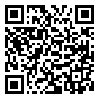Volume 21, Issue 81 (8-2021)
refahj 2021, 21(81): 287-327 |
Back to browse issues page
Download citation:
BibTeX | RIS | EndNote | Medlars | ProCite | Reference Manager | RefWorks
Send citation to:



BibTeX | RIS | EndNote | Medlars | ProCite | Reference Manager | RefWorks
Send citation to:
vaez mahdavi Z, raghfar H, emami K, haji nabi K. (2021). Food Items Elasticity Estimation for Income Quantiles in Iran,
2016 and 2018. refahj. 21(81), 287-327.
URL: http://refahj.uswr.ac.ir/article-1-3851-en.html
URL: http://refahj.uswr.ac.ir/article-1-3851-en.html
Abstract: (9814 Views)
Inrtoduction: Macroeconomic instability, exchange rate volatility, high inflation and consequently rising food price have been critical issues in recent years in Iran’s economy. Policy inefficiencies, policy inconsistency, and food price fluctuations have affected vulnerable households and low-income groups and increased food poverty, undernourishment and malnutrition. The study of income and price elasticities of food items, especially in different income groups, provides valuable information for policy making.
Method: This research, using the approach of the almost ideal demand system, studies the elasticity of food items in the household consumption budget for 2016 and 2018 and compares different income groups. The household income and expenditure from raw household survey data for the years 2016 and 2018. Due to the heterogeneous impact of price changes on demand in different income groups, the study was conducted on different income quantiles. In this respect, we focused on meat, bread, and dairy item.
Findings: Results show that bread is identified as an inelastic good and dairy and meat as elastic goods for low-income groups. The results of quantile analysis show that in 2018, bread was a Giffen good for the first quantile and necessary good for the third and the fifth.
Discussion: The results indicate that the consumption of animal protein and dairy products is highly sensitive to the price of these goods. An increase in the price of these goods will limit the consumption of these micronutrients in the household food basket or possibly eliminate it in the low-income groups.
Keywords: Income elasticity of demand, Price elasticity of demand, Almost Ideal Demand System, Income quantile.
Type of Study: orginal |
Received: 2021/02/19 | Accepted: 2021/09/8 | Published: 2021/09/14
Received: 2021/02/19 | Accepted: 2021/09/8 | Published: 2021/09/14
Send email to the article author
| Rights and permissions | |
 |
This work is licensed under a Creative Commons Attribution-NonCommercial 4.0 International License. |







